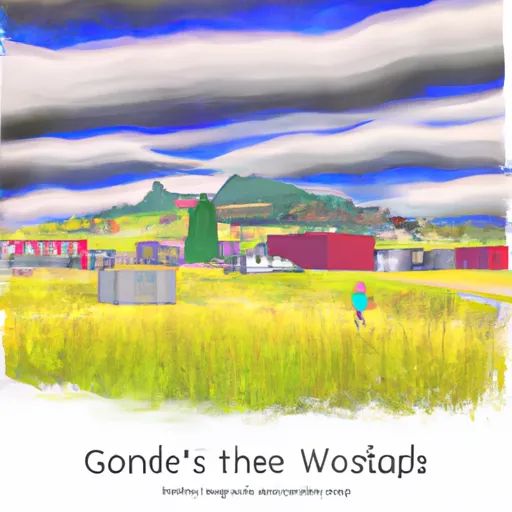-
 Snoflo Premium
Snoflo Premium
Get unlimited access to all our content
With no Ad interruptions! - Start Your Free Trial Login with existing account
Sweetgrass
Eden Index
Climate
6.9
•
Recreation
0.3
•
Community
•
Safeguard
2.9/10

Sweetgrass, Montana is a picturesque town nestled in Toole County, boasting a unique climate and abundant outdoor recreation opportunities. The region experiences a semi-arid climate, characterized by warm summers and cold winters. Summers in Sweetgrass are pleasant, with temperatures ranging from the mid-70s to low 80s Fahrenheit. Winters can be quite cold, with temperatures dropping below freezing, providing ample opportunities for winter sports enthusiasts.
Sweetgrass lies near the Milk River, a vital hydrological feature that offers important fishing and boating activities. The river is home to various fish species, including trout, walleye, and northern pike, attracting anglers from near and far.
Nature enthusiasts can explore the breathtaking scenery of Sweetgrass by embarking on hiking and camping adventures in the nearby Sweet Grass Hills or Del Bonita Recreation Area. The region's vast open spaces also provide opportunities for birdwatching, wildlife photography, and off-roading.
For those seeking a more challenging experience, Sweetgrass offers excellent hunting opportunities, with an abundance of deer, elk, and upland game birds. The town's local guides and outfitters can assist visitors in making the most of their outdoor adventures.
In conclusion, Sweetgrass, Montana, provides a climate that allows for a range of outdoor activities throughout the year, with its semi-arid climate, hydrological features, and diverse recreational opportunities attracting nature lovers and outdoor enthusiasts alike.
What is the Eden Index?
The Snoflo Eden Index serves as a comprehensive rating system for regions, evaluating their desirability through a holistic assessment of climate health, outdoor recreation opportunities, and natural disaster risk, acknowledging the profound impact of these factors on livability and well-being.
Climate Health Indicator (CHI): 6.9
Sweetgrass receives approximately
357mm of rain per year,
with humidity levels near 69%
and air temperatures averaging around
7°C.
Sweetgrass has a plant hardyness factor of
4, meaning
plants and agriculture in this region thrive during a short period during spring and early summer. Most
plants will die off during the colder winter months.
By considering the ideal temperature range, reliable water supplies, clean air, and stable seasonal rain or snowpacks, the Climate Health Indicator (CHI) underscores the significance of a healthy climate as the foundation for quality living.
A healthy climate is paramount for ensuring a high quality of life and livability in a region, fostering both physical well-being and environmental harmony. This can be characterized by ideal temperatures, reliable access to water supplies, clean air, and consistent seasonal rain or snowpacks.
Weather Forecast
Streamflow Conditions
Milk
Area Rivers
Milk
Snowpack Depths
Milk
Reservoir Storage Capacity
Milk
Groundwater Levels
Recreational Opportunity Index (ROI): 0.3
The Recreational Opportunity Index (ROI) recognizes the value of outdoor recreational options, such as parks, hiking trails, camping sites, and fishing spots, while acknowledging that climate plays a pivotal role in ensuring the comfort and consistency of these experiences.
Access to outdoor recreational opportunities, encompassing activities such as parks, hiking, camping, and fishing, is crucial for overall well-being, and the climate plays a pivotal role in enabling and enhancing these experiences, ensuring that individuals can engage in nature-based activities comfortably and consistently.
Camping Areas
| Campground | Campsites | Reservations | Toilets | Showers | Elevation |
|---|---|---|---|---|---|
| Under Eight Flags City CG | 260 | 3,411 ft |
Catastrophe Safeguard Index (CSI):
The Catastrophe Safeguard Index (CSI) recognizes that natural disaster risk, encompassing floods, fires, hurricanes, and tornadoes, can drastically affect safety and the overall appeal of an area.
The level of natural disaster risk in a region significantly affects safety and the overall livability, with climate change amplifying these risks by potentially increasing the frequency and intensity of events like floods, fires, hurricanes, and tornadoes, thereby posing substantial challenges to community resilience and well-being.
Community Resilience Indicator (CRI):
The Community Resilience Indicator (CRI) recognizes that education, healthcare, and socioeconomics are crucial to the well-being of a region. The CRI acknowledges the profound impact of these elements on residents' overall quality of life. By evaluating educational resources, healthcare accessibility, and economic inclusivity, the index captures the essential aspects that contribute to a thriving community, fostering resident satisfaction, equity, and social cohesion.

